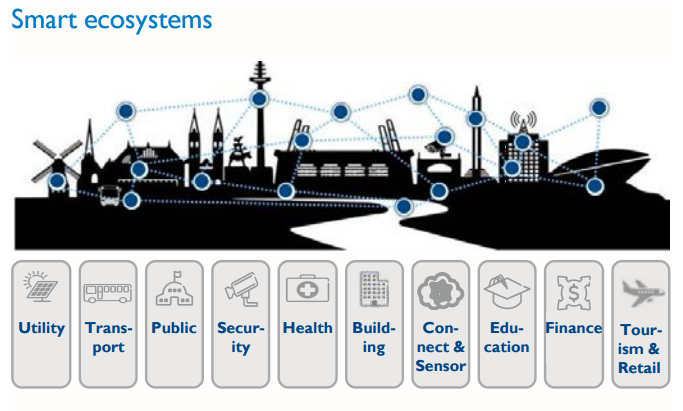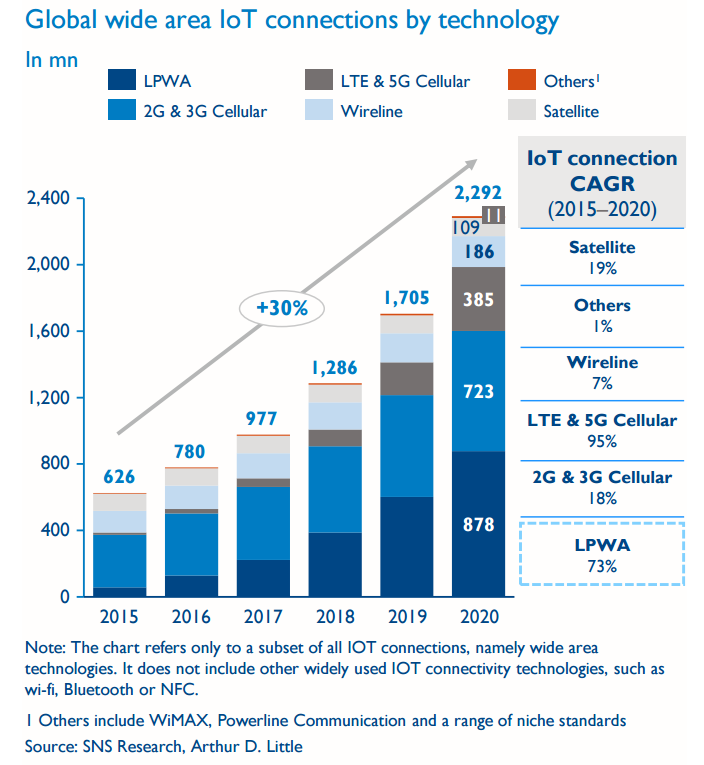
DOWNLOAD
DATE
Contact
As of today, smart ecosystems are limited to reaching their full potential based on the underlying connectivity technologies, such as fiber, cellular and Wi-Fi. Due to their insufficient capabilities with respect to high energy consumption, cost of network roll-out and (hardware) investments, many important use cases (such as tracking, parking and lighting) are economically difficult to realize. Recently, a new alternative has seen the light of day, namely low-power, wide-area (LPWAN) technologies. In this viewpoint, we will present some of the emerging standards and examples in which LPWAN as the connectivity enabler can create significant benefits.
Smart ecosystems demand an underlying connectivity technology that precisely fits their needs
Smart ecosystems such as smart cities are developing into an important cornerstone in the “digital society” and have become a global phenomenon. It is estimated that the number of connected devices related to smart cities will represent approximately 20 to 30 percent of total Internet of Things (IoT) connections (Gartner, 2016). Typical use cases include garbage containers, parking spaces and light posts, and will reach across multiple “verticals” in a smart ecosystem. These particular IoT applications contributing to make an ecosystem “smart” do not consume a lot of data per transmission – usually only a couple of bytes – and only require near real-time communication.

Additional requirements for such use cases usually include a long battery life to minimize maintenance cost. This is because sensors might be placed in remote or hostile areas, making replacement challenging – for example, sensors embedded into the tarmac of roads. Moreover, a low-cost infrastructure is paramount to make these smart ecosystem use cases economically viable. Furthermore, secure communication must be guaranteed in order to meet the highest security standards. Lastly, the sheer number of connections sending only small amounts of data requires a scalable and efficient network technology that does not compromise or overload the existing public infrastructure (e.g. mobile networks).
The available technology solutions are diverse and target different use cases
Over the last decades, a variety of alternative network technologies have emerged. These are mostly deployed by the classical telecom-operator community, but have also partly allowed institutions, infrastructure companies, utilities and other private companies to deploy their own (private) networks.
The most prominent wireless technology in this context is probably classical cellular, including 2G, 3G and 4G, which is widely deployed and reliable. Typical smart ecosystem use cases suited for cellular include smart-grid management, medical wearables and video surveillance applications.
However, operating and maintenance costs are considerable. In addition, complex protocols have a negative impact on energy consumption, resulting in low battery life – hence low autonomy.
Short-range wireless technologies, such as wi-fi, Bluetooth and near-field communication (NFC), are great for small distances. In the smart-ecosystem context, the latter fits contactless payment, for example, purchasing and validating tickets for public transport services using NFC-equipped mobile phones, and Bluetooth beacons monitoring traffic and road construction projects. However, those technologies are only capable of communicating for a couple of meters at maximum without being amplified. Therefore, deploying a large-scale network would be too expensive and difficult to manage because of the numerous required gateways. These shortcomings, along with constraints on battery life, will limit the usability of such technologies in the smart-ecosystem context.

In the other extreme, satellites offer ubiquitous coverage but are usually not suited to serve smart ecosystem use cases as the connectivity is comparably expensive, requires line-of-sight and has limitations in handling the vast amount of possible connections in the IoT ecosystem.
LPWA technologies, such as LoRaWAN, ultra-narrow band (UNB) and narrow-band IoT (NB-IoT) can provide a remedy and precisely address the needs of low-power, low-cost smart ecosystem applications. As a result, LPWA is expected to grow by an annual average of more than 70 percent through 2020, as Figure above shows, which puts the different IoT technologies in perspective.

